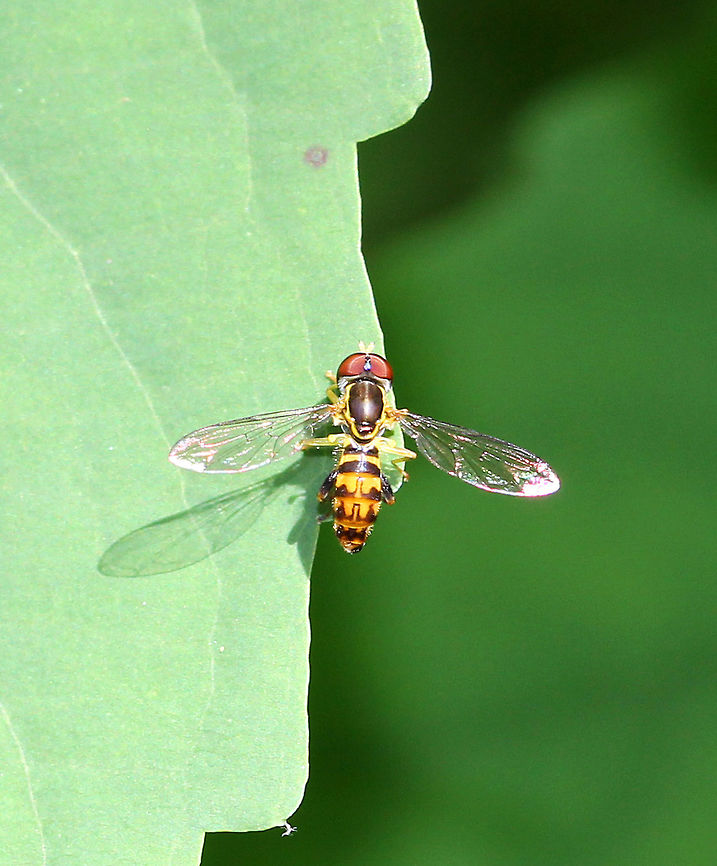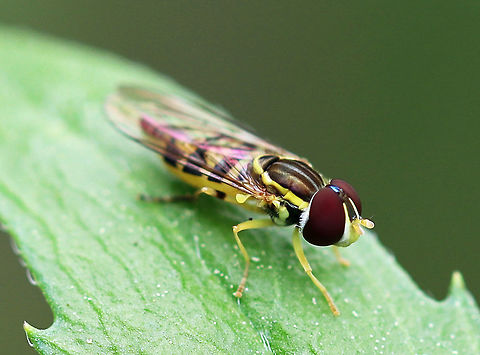 Promoted
Promoted
Hoverfly - Family Syrphidae
This is just a blurry hoverfly, and most people don't think too much about them. But, I think they are incredible, and here's why...
Many native pollinating insects are not actually bees, and flies are often overlooked and underappreciated for their role in pollination . Hoverflies are included in this group of non-bee pollinators. As an added benefit, many hoverflies are bee mimics: in both appearance and behavior.
Physically, they have a distinctive black and yellow pattern on their abdomens, which mimics the markings of stinging bees. This type of mimicry is known as Batesian mimicry and occurs when one harmless organism (hoverfly) resembles a harmful organism (stinging bee) to gain protection from predation. Hoverflies can't sting, but their physical resemblance to bees helps to protect them from predators.
Behaviorally, hoverflies continue to mimic bees as they are also pollinators. Although they are not as efficient as bees - probably partly because hoverflies aren't as hairy as bees (hairs aid in pollination by helping capture pollen to then transfer to other flowers). Hoverflies take their mimicry very seriously and some even buzz like bees!
Hoverflies have some interesting and potentially important roles in pollination and in biocontrol.
There has been a global decline of pollinator species. Most humans assume that pollination is a free and abundantly available ecological service. But, this anthropocentric outlook has put too much pressure on pollinators by both increasing their demand and removing their habitat. It is estimated that at least 75% of the fruits and vegetables that we consume require insect pollination. Without pollinators, crops would not grow and most fruits and vegetables would become scarce or else prohibitively expensive. Production of other products will also be influenced by pollinator declines - for example, clothing industries would be affected since cotton is an insect-pollinated crop. So, it's obvious to state that pollination is critical for the production of food and other products. Non-bee pollinators, such as hoverflies play a role in this important process.
Additionally, some hoverfly species are useful as biological control agents because their larvae snack on aphids. Since most hoverflies have predatory larvae, using them in biocontrol may help control aphid populations.


comments (2)
As for hoverflies, I'd like to add that their mimicry can also work against them. A lot of people regularly mistake it for a wasp, and then use aggressive methods to get rid of them.
Finally, they're also thankful photographic subject for hovering so still in mid-air. Posted 7 years ago